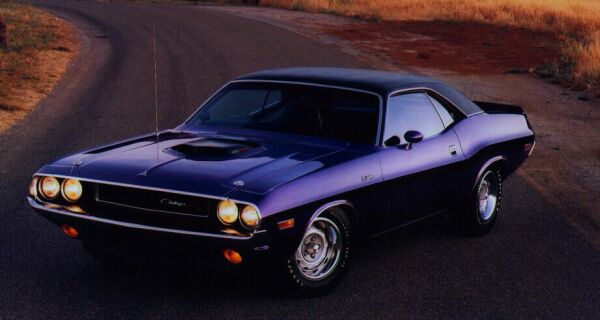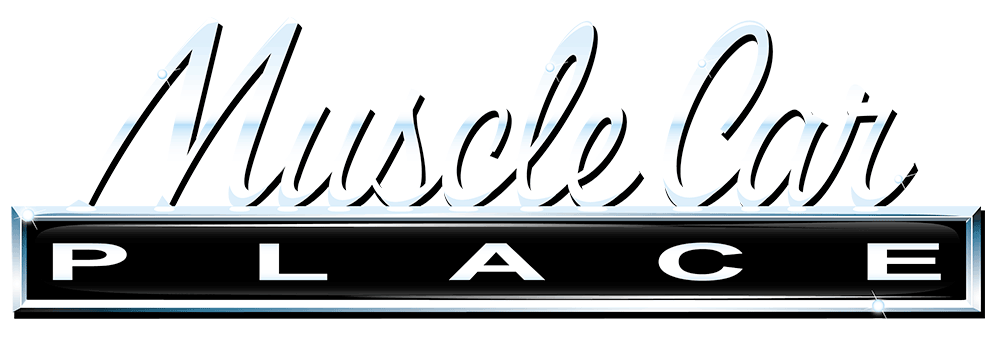Welcome to Part 3 of our 4-Part Series: A Rookie’s Guide to Buying a Muscle Car!
This series is designed for the person new to the muscle car world. You know you’d like to own one, but in all honestly, they all look great to you and you have no idea where to start. We’ll assume that you want to really like the car as well – even if you are purchasing it as an investment. Our series will deal with the following topics (and by the end you’ll be ready to wheel your new ride down the road):
1) Determine the make and model you want
2) Determine how you want to use the car (drive often, show car only, etc.)
3) Determine your price range and payment method
4) Evaluate the car, set up insurance, and purchase
Since we’ve already deal with Topic #1 (Deciding which make and model car to choose) and Topic #2 (Determine how you want to use the car) we can now move on to the next step.

Today’s topic: Determine your price range and payment method.
After completion of steps 1 and 2 you should now have your make and model choice fairly whittled down, and you’ve likely already started noticing a few prices. Now let’s dig into determining what a reasonable price range would be for a particular car, and then go about deciding how to pay for it.
- Price Range:
Determining the price range on a major purchase, whether it be a muscle car, a fighter jet, or a dishwasher generally comes down to evaluating your personal financial situation and determining what you can afford. We’ll assume that you already understand that and will stick to determining the price range that the make and model car you are looking at may fall in.
So just how do you really determine the price range for a classic muscle car? Simple – you need to take a look at what the market thinks it’s worth. Just like real estate, muscle car values are determined by what the market thinks the cars are worth, not by calculating the sum cost of all of their parts. The price that people are currently paying for muscle cars is key. It’s a subjective thing that relies on supply and demand. Also, unlike 99% of modern cars, 1960’s and ’70’s muscle cars are really not going down in value anymore. Their value bottomed out long ago and has been on the rise ever since. Over the past few years we’ve seen somewhat of a bubble in values, but they still remain quite high.
Now that we understand how value ranges are established for a make and model, it’s clear to see why understanding how you will use your muscle car is critical when doing your car shopping (refer to our previous post for more details). If you are planning to have a weekend funmobile, a mid-price range car is going to serve you quite well, and you may even be able to go cheaper. If you’re buying a car for an investment a mid-price range car is likely the LOWEST value of car you would go with. Remember, the unique cars, the popular cars, and the all original cars are going to be at the high end of the price range for that particular make and model.
To see what the market thinks various make and model cars are worth based on their varying condition, simply visit Keith Martin’s Collector Car Price Tracker. It’s the best resource on the web to get an idea of the trends in the industry based on SALE prices of cars, and you can look at values over the last several years on a model by model basis. We offer a free one-month membership to Keith Martin’s Collector Market simply by signing up for our newsletter. Remember, HOW you plan to use the car is a must when looking at car values. You may come to the conclusion after looking at the sale prices cars have gone for that you need to look at a different make/model, or change your plans in how you will use the car.
In addition to Keith Martin’s Collector Car market, start taking notice of all the prices listed in the Classifieds section here at The MuscleCar Place and the other online places as well. Most asking prices for cars are consistent with what the market will bring (give or take), so you should at least be able to develop a trend.
- Payment Method:
Now that you have the make/model down, how you’re going to use the car determined, and have a good idea of what the car will cost you to buy it’s time to put your payment method together. Do this BEFORE striking a deal for the car. Being prepared with information in this step is key to making a purchase that is fair to both you and the car owner, so do your homework ahead of time.
Most dealers do offer financing of some type as a courtesy, but in all honestly the best payment method is the old fashioned one: cash. Buying a car in cash will help you do a couple of things:
1) It will allow you to negotiate the best price possible
2) It will secure you from (potentially) being upside down in a loan – and remove other risk as well.
If you are buying a car for an investment, the car really can be considered part of your overall portfolio (just as real estate might be). Never cash out a 401k early to buy a muscle car (or anything for that matter), but instead use cash available on hand or transfer it from other cash investments. Remember, while muscle car values have been doing well in the past 10 years investment growth is not a guarantee. Bill Paweski at Arizona Classics routinely recommends to his clients to be mindful of the market – and to be prepared to hang on to the car until the market is ready before even thinking about selling it (which is another good reason to purchase in cash)!
Wrap-up:
Doing your homework up-front will save you a lot of pain later on. Now is not the time to shortcut the process. The last thing you’d want to happen would be to end up hating the muscle car that you purchased, and if you follow the process laid out here that will not happen. Go for it!
In our next and final post in this series we will discuss how to evaluate the car, set up insurance, and purchase!
=========================
Robert Kibbe
